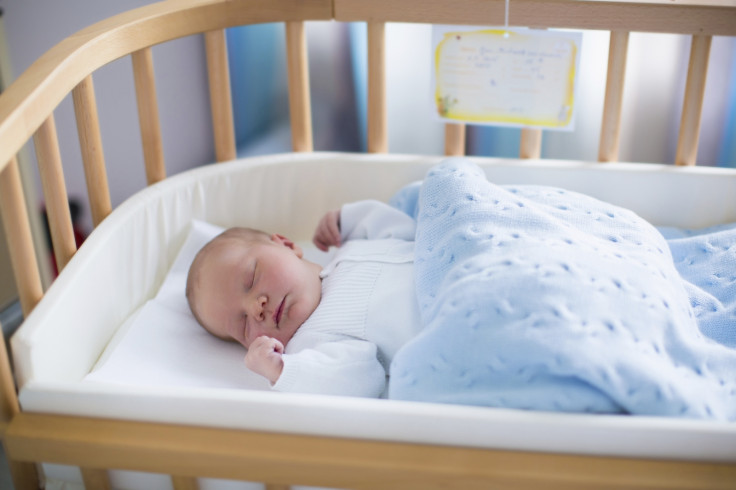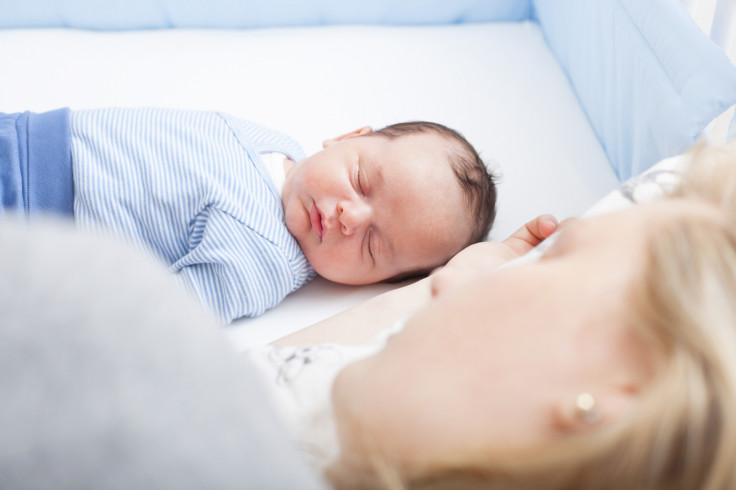Sudden Infant Death Syndrome – Why parents may choose to put babies in 'unsafe' sleeping positions
Many parents do not follow recommendations but how can a better public health message be passed on?

Many parents do not put their babies to sleep in the recommended position – on their backs – or in the safest bed surfaces possible, scientists have discovered. Their concern is that this could increase the risk of sudden infant death syndrome (SIDS).
As it name indicates, SIDS is characterised by the sudden and unexplained death of an otherwise healthy baby. Studies have suggested that a range of factors could be to blame, but its exact causes remain unknown.
"The theory which has gained general acceptance over the last 15 years is known as the Triple Risk model. This identifies three overlapping areas which may come together in these infants and result in a fatal outcome.," Dr Brian Kelly, from the Royal College of Paediatrics and Child Health, told IBTimes UK.
"The first of these is thought of as a vulnerabilility in the infant. This may be more apparent in twins, and triplets, premature infants, low birth weight babies.
The second refers to a critical age when such vulnerability might be most exposed, especially in the first few months of life. The third factor is stresses which place pressure upon the baby to respond in a healthy way. For example, illness, overheating, non-optimal sleep position".
After post-mortem and a thorough examination of the circumstances surrounding the death, about half of these events are able to have a cause of death identified. The remainder are classified as unexplained. What is clear is that many of these deaths have features which have some similarities.
The overlapping complexity of factors illustrates just how complex complex the health education message can be when we talk to families about about sudden infant death and steps which they can take to reduce risk.
A widespread problem?
Health experts recommend that the following safe sleeping practices be followed. The most important one is to put the baby on its back, in its own cot. Making sure the baby's mattress is a flat, firm surface without any loose items such as pillows or soft toys is also considered necessary. Paediatricians also recommend a smoke-free room, with a temperature set between 16 and 20C and no blankets covering the baby's. Co-sleeping should be avoided, especially if parents have consumed alcohol or drugs.
The recent study published in the journal Pediatrics investigated how far parents followed these recommendations by recording nocturnal sleep videos of 160 infants at the age of one month old, and then again at three and six months old.

The scientists discovered that more than 80% of parents placed their children – whether at one, three or six months old – in beds where loose and potentially hazardous objects (such as toys), were found. Between 14 and 33% of babies were placed on their back to sleep, and between 10 and 21% on "non-recommended surfaces". A high proportion of parents also moved their babies from their initial position to another sleeping environment during the night – for example taking them in bed with them. This is problematic because co-sleeping is known to increase the risk of SIDS.
"Educated parents, who actually want to do the right thing, to the point they have volunteered to participate in the study – even them end up sometimes putting their baby in the wrong sleeping position. We can assume than less educated patents will have less compliance to the safe sleeping recommendations which suggests that the figures revealed by the study may even be an underestimate," Kelly says.
The fact unsafe practices may be widespread makes it necessary for health professionals to pass on the right public health message to parents.
A complex, nuanced message
The problem is that promoting safe sleeping is more complex than it looks. Despite the devastating impact it can have on families who experience it, SIDS is relatively uncommon. Only about 300 cases are reported each year in the UK. This means people are often not aware of it, or believe they will not be impacted.
Until two decades ago, it was recommended that people put their babies to sleep on their tummies, but a range of studies showing a link between tummy sleeping and sudden death challenged this view. In the early 90s, the first campaign to have babies sleep on their back was launched, and it contributed to reducing mortality by half. However, deaths continued to occur, and although other risk factors such as co-sleeping or loose objects in the bed were identified, this evidence often appeared associated with isolated cases. This makes it harder for parents to adhere to the recommendations.

Finally, parents may also adopt unsafe sleeping practices because in some cases, their benefits seem to outweigh their costs. "Safe sleeping message is very difficult to convey. There may be good reasons why parents chose less safe sleeping arrangements such as co-sleeping, for example because they want to comfort the baby, because it does not feel natural to leave it in the cot, or because it facilitates breastfeeding. So we need to approach them with a nuanced message, for example not saying 'never' to co-sleeping, but making sure parents are aware of the risks" Kelly points out.
To achieve a balanced message, one that explains the risks without blaming the parents, one element is crucial: trust between paediatricians and the families they care for.
© Copyright IBTimes 2025. All rights reserved.






















